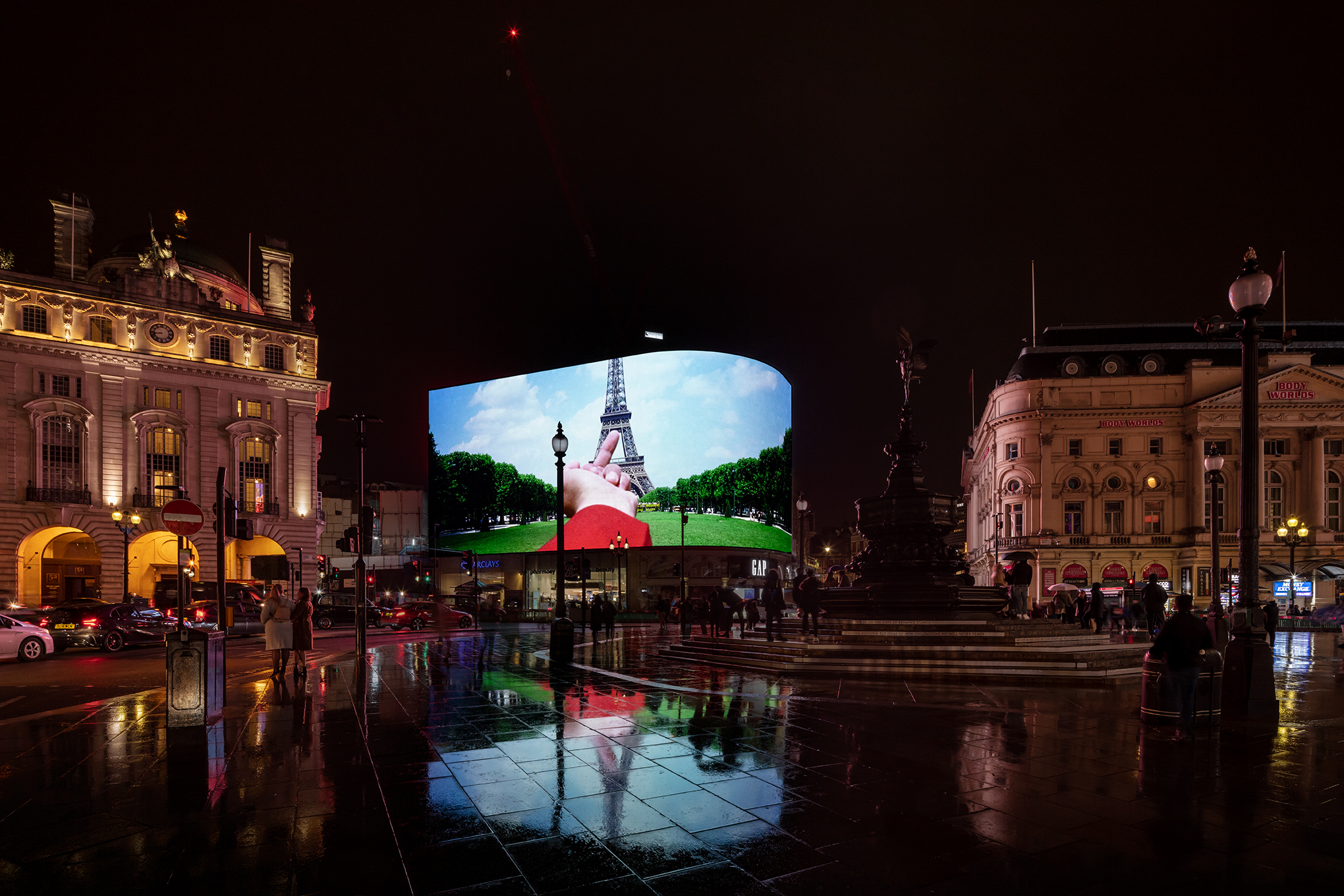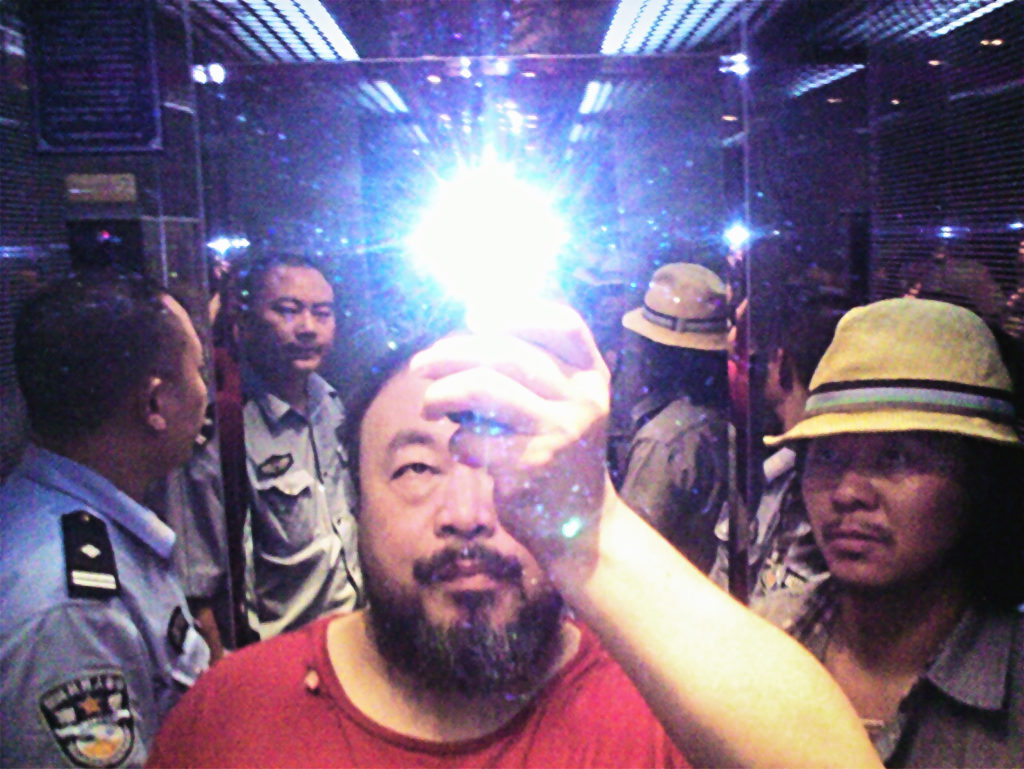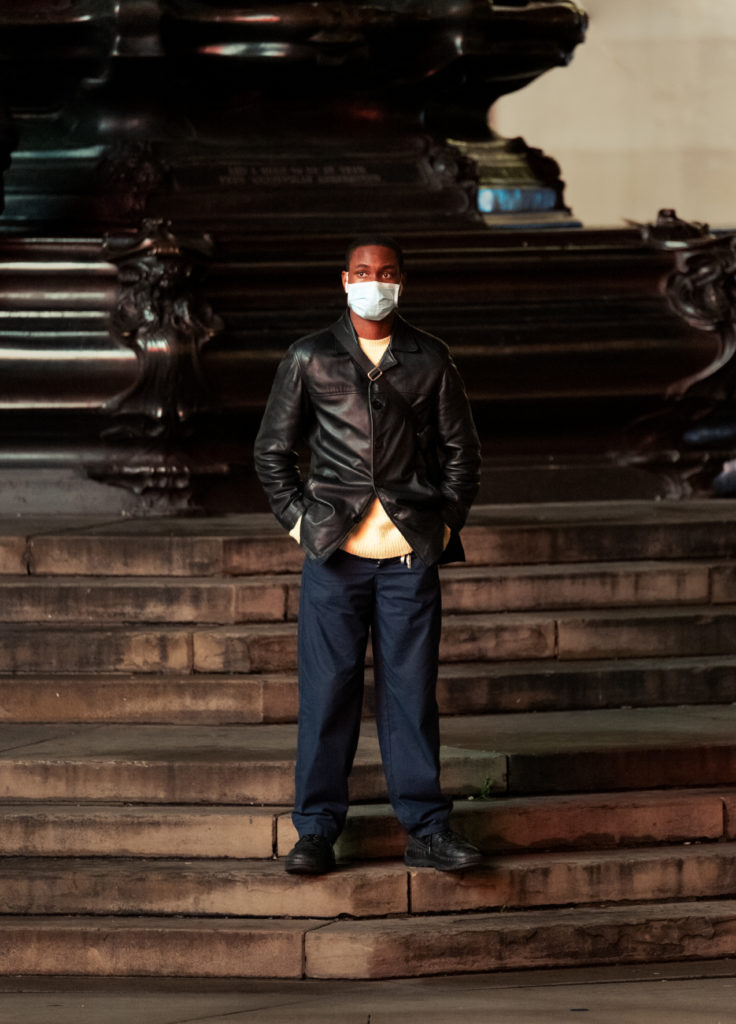Ai Weiwei: Observations on Power and Surveillance
Written by Charlie Colville

As we enter the last quarter of 2020, a new platform for the creation and exhibition of digital art was launched in the heart of Piccadilly Circus. Known as CIRCA, the platform allows for artists to showcase their work and ideas in the form of a two-minute video on the Piccadilly Lights, one of London’s most famous landmarks.
CIRCA have recently launched a collaborative project titled c. 20:20, which sees an artist take over the Piccadilly Lights for an entire month. This month will see artist and activist Ai Weiwei deliver a series of videos documenting his career. On each day of October at 20:20 a video produced by Ai’s studio will be shown to the public both in Piccadilly a Circus and online. The project combines video footage, photography, music, poetry, and art to present a colourful retrospective of Ai’s artistic career. Beginning with Ai’s early days in New York and culminating in his most recent projects, the series promises a deeper insight into his art, life, and relationship with the Chinese government.
The next five days take us to the half-way point of the project, expanding upon Ai’s artwork and life experiences as we come closer to the present day. In this section, it becomes increasingly apparent just how much of the artist’s career centres around his relationship with the Chinese government. Playing with the power dynamics of images and icons, Ai establishes his capability in using his art to question the authority of existing systems in China – to the apparent distaste of the current administration.
How Ai Made Headlines for Pissing Off the Chinese Government
As suggested by the videos we have already seen, Ai’s relationship with the Chinese government can be viewed as tenuous at best and violent at worst. The events of the Sichuan earthquake only scratch the surface of Ai’s history of run-ins with the authorities, and the next set of videos express an even more complicated relationship than previously thought.
Ai hasn’t been shy about showing the world his interactions with China’s surveillance state, often documenting his interactions on videos, photographs, and social media posts. In 2011 for example, the artist documented how the government demolished his Shanghai studio without warning (see CRABS AND MERMAIDS for the footage).
That same year, the artist was arrested for suspected “economic crimes”, specifically tax evasion, and was subsequently detained for 81 days. Following his release, Ai was prohibited from leaving Beijing for a year and was consistently kept in news reports for his crimes. A year later, Ai was still being heavily monitored by the police, his studio was surrounded by police cars, and his movements were kept under constant supervision. He was also placed under house arrest by the authorities on multiple occasions, preventing him from attending hearings concerning his alleged tax evasion case.
Ai’s bail was eventually lifted in 2012, allowing him to leave Beijing. However, his passport had been confiscated by the police and he was prohibited from traveling to other countries due to other suspected crimes. This ban on Ai’s movements continued until 2015, when the artist was given back his passport, but even then, he needed to obtain official permission before travelling.
Consequently, Ai has developed one of the most unconventional relationships ever seen between an artist and their government, prompting many of his artworks to explore the subject.

SURVEILLANCE | LEG GUN | YOURS TRULY
The selected videos build upon these ideas by exploring the themes of surveillance and power. Shown on October 11th, SURVEILLANCE compiles artwork, photos, and videos of the artist’s experience with state surveillance following his period of detention. With an emphasis of cameras and police surrounding him, the artist highlights the exertion of power on the part of the authorities. In contrast, LEG GUN examines how a viral phenomenon started by Ai in 2014 allowed for certain systems of power to be questioned, flipped, and re-angled. By allowing others to use the visual image of a ‘leg gun’ to perpetuate a trend, the artist illustrates how people are able to put their own spin on something and change its initial meaning. The last video in this section, YOURS TRULY, focuses on a 2014 exhibition by the artist in the former US federal prison on Alcatraz Island. Using the environment of a prison, the artist expands upon the ways people are criminalised for speaking out against their government.
SURVEILLANCE plays on this concept of observation and state intervention by documenting the changes in Ai’s life after his detention period. Followed by cameras and secret police, Ai makes a point of tracking the movements of the people who track him. The majority of the video is set on the streets of Beijing, which gives the video a dramaticism that mirrors crime and police shows on television. It further emphasises the ridiculousness of the situation from Ai’s point of view, producing a commentary on how the government continue to harass and keep tabs on him.
The ending of the video is also reminiscent of SO SORRY, an earlier video in the CIRCA project. As with SO SORRY, SURVEILLANCE ends with a scuffle between the artist and police over a camera. However, on this occasion the roles have been reversed, and it is Ai who is seen trying to extract the camera from the hands of the secret police. This reversal of power is a sharp contrast from how the artist portrayed himself only a few videos ago. Rather than a victim of state suppression, Ai becomes a vigilante who can assert his own authority. It is this shift which emphasises how, through his art, Ai is able to shake and intimidate the previously impenetrable façade of the government.
LEG GUN further promotes the use of art as a means of challenging set ideas. The video opens with footage of the ballet ‘The Red Detachment of Women’, where several dancers are seen using their legs as guns to imitate warfare. The show was one of the eight model plays of the Chinese Cultural Revolution, meaning it was one of the only plays that was permitted during the Maoist regime. Meant to paint the communist regime in a valiant light, the narrative conveys a propagandised tale of heroism about the revolution. However, the image of the ballet leg gun is quickly followed by a photo of Ai in a similar pose. The rest of the video shows how, after Ai posted this photo to Instagram, many other people imitated the pose in a viral trend. Hundreds of people can be seen adapting the leg gun in various settings, but the overall effect is playful and humorous, instead of the serious message of communist courage it once was.
CIRCA notes how, in an interview with society press, “Ai alluded to the fact that power was often exerted in the name of security, but that power was questionable.” Considering this, the artist pushes the idea that power and influence are fluid rather than constant; they don’t remain in one place as long as someone is there to question that authority. The leg gun is an example of this. The once powerful image has been reduced to a silly viral trend, illustrating how images can be taken and reshaped to fit a new idea.

YOURS TRULY also builds upon how people can connect to promote a vision of a better future, whether or not they are an artist with a platform. The video focuses on an installation on Alcatraz Island, where 176 portraits of political prisoners lined the floors of its famous prison. Each portrait is made out of LEGO bricks in a rainbow of colours, providing a vivid sense of life and personality that contrasts with the sterility of the environment. The bricks themselves play on the metaphor of building and creating, providing a lasting monument to the voices of those with a potential to shape our future. However, a point emphasised with this idea is the fact that each portrait was built by someone that wasn’t the sitter- they needed help to be seen. The symbolism of this act emphasises the need of a support network amongst communities, connecting people in order to build a vision of the future. The letter writing campaign that makes up part of the exhibition further highlights this, establishing the importance of connections and encouraging a discourse where the general public could write to the political prisoners on postcards designed by Ai.
As with many of the previous videos, YOURS TRULY ends with a message: “Every one of us is a potential convict.” At first, this phrase can be seen to pinpoint the fact that the people whose portraits make up the exhibition should not be considered criminals, as they are pushed into situations where their speaking out results in their detainment. However, by including “us” in this statement, Ai emphasises the fact that all of us are subject to a sense of imprisonment regardless of whether this is physical or not. As societies are brought together under one regime, we all face the possibility of becoming prisoners- either through physical imprisonment or living in silence under an oppressive regime. It is this point of discourse which becomes all the more prominent when being shown in a public space such as Piccadilly Circus’s illuminated billboard, Piccadilly Lights.
As CIRCA 2020 continues to delve deeper into Ai Weiwei’s life, audiences can get a better sense of how the artist’s experiences have shaped and fuelled his ideas, art, and social commentaries. Each video emphasises the need to be autonomous in mind but part of a connected community, highlighting the relationship between artist and audience, as well as activist and society.
Charlie Colville is the current Arts Editor for Mouthing Off magazine, an online platform designed to give young people the opportunity to find a new voice – a guttural scream loud enough to arouse fresh ideas, creative thought, and inspire artistic flair.